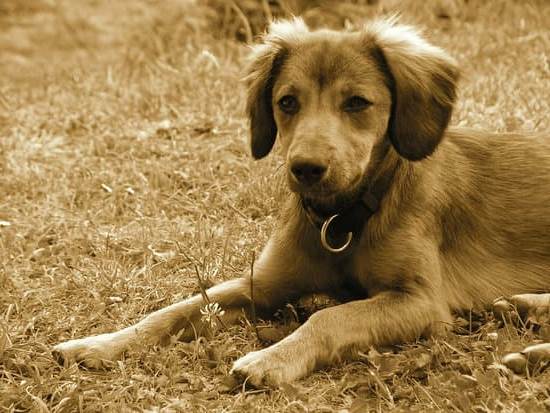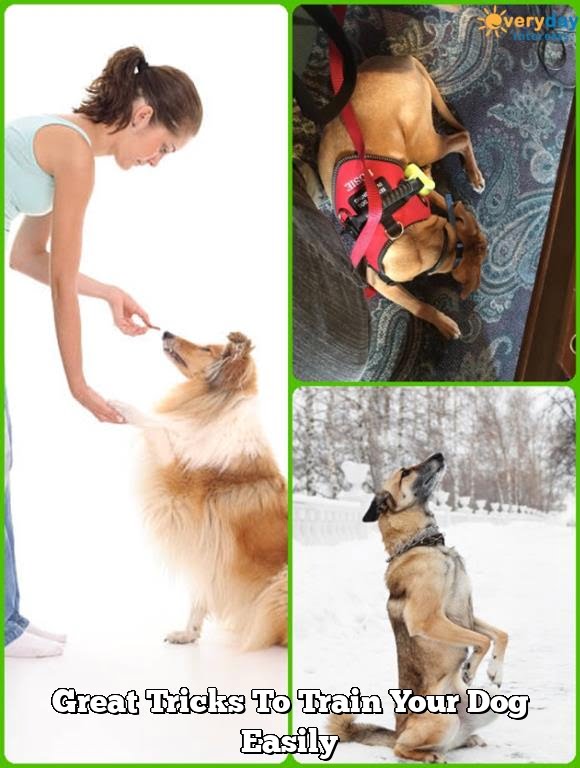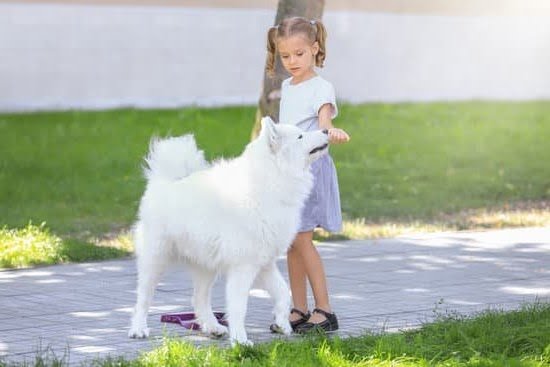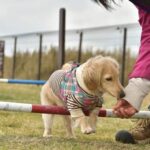Are you interested in learning how to train your dog to do circus tricks? Circus dog training is not only a fun and entertaining activity for both you and your furry friend, but it also helps to strengthen the bond between the two of you.
In this article, we will explore the basics of circus dog training, from choosing the right dog for circus tricks to teaching advanced tricks like jumping through a hoop and balancing on a ball. Whether you’re a beginner or an experienced dog trainer, this guide will provide valuable tips and techniques to help you train your dog to do impressive circus tricks.
Circus dog training is an exciting endeavor that requires patience, dedication, and a good understanding of basic training techniques. Before you begin training your dog for circus tricks, it’s important to choose the right breed and personality that is best suited for this type of activity. Once you have found the perfect candidate, understanding basic training techniques such as positive reinforcement and shaping behaviors will be crucial in ensuring successful training sessions.
In addition to discussing the fundamental aspects of circus dog training, we will also cover topics like setting up a training schedule, troubleshooting common issues that may arise during training, and important safety tips to keep in mind while practicing with your dog. Furthermore, we will emphasize the significance of positive reinforcement in circus dog training; encouraging desirable behaviors through rewards and praise will play a key role in achieving success.
So let’s dive into the world of circus dog training and unleash your pup’s potential.
Choosing the Right Dog for Circus Tricks
When it comes to training a dog for circus tricks, it is important to choose the right type of dog for the job. Not all dogs are suited for this type of training, so it is essential to consider certain characteristics and traits when selecting a dog for circus tricks.
Temperament and Personality
One of the most important factors to consider when choosing a dog for circus tricks is their temperament and personality. Dogs that are eager to please, social, and have a high level of energy tend to excel in this type of training. Breeds such as Border Collies, Golden Retrievers, Australian Shepherds, and Terriers are known for their intelligence and trainability, making them great candidates for learning circus tricks.
Size and Physicality
The size and physicality of a dog also play a role in their ability to perform circus tricks. Smaller breeds such as Jack Russell Terriers or Poodles may be well-suited for tricks that require agility and flexibility, while larger breeds like German Shepherds or Labradors may excel in tricks that require strength and power.
Health and Age
It is important to consider the health and age of the dog when selecting them for circus trick training. Dogs should be in good physical condition with no existing health issues that could hinder their ability to perform tricks safely. Additionally, younger dogs may have an easier time learning new skills compared to older dogs.
By carefully considering these factors when choosing a dog for circus trick training, you can set yourself up for success in teaching your furry friend a variety of impressive stunts.
Understanding Basic Training Techniques
When it comes to training your dog to do circus tricks, it is important to start with a strong foundation of basic training techniques. One of the most essential commands for any circus dog is “sit.” This command forms the basis for many other tricks such as “stay,” “shake hands,” and “balance on a ball.” Teaching your dog to sit can be done through positive reinforcement, using treats and praise to reward them for sitting on command.
In addition to sitting, teaching your dog to “stay” is also crucial for circus tricks. This command requires patience and consistency from both the trainer and the dog. Start by having your dog sit, then take a step back while saying “stay.” Gradually increase the distance and duration of the stay as your dog becomes more proficient at the command.
Another basic training technique that is important for circus dog training is teaching your dog to “roll over.” This trick can be taught by starting with your dog in a down position, then using a treat to guide them into rolling onto their back.
With consistent practice and positive reinforcement, your dog will eventually learn to roll over on command, impressing audiences with this classic circus trick. Mastering these basic training techniques will set the stage for success as you move on to more advanced circus tricks with your furry performer.
Setting Up a Training Schedule
Training your dog to do circus tricks requires dedication and consistency. Setting up a training schedule will help you and your dog stay on track and make progress in learning new tricks. Here are some tips for creating an effective training schedule:
- Consistency is key: Set aside a specific time each day for training sessions. Dogs thrive on routine, so having a consistent schedule will help them learn more quickly.
- Short and frequent sessions: Keep training sessions short, about 10-15 minutes at a time, to avoid overwhelming your dog. Frequent sessions throughout the day will reinforce the learning process.
- Choose a quiet, distraction-free environment: Find a space where you and your dog can focus without distractions. This will help maintain your dog’s attention during training.
Remember that every dog is different, so be patient and flexible with the training schedule. Some dogs may pick up new tricks quickly, while others may take more time to master them. By setting up a structured training schedule, you’ll be well on your way to teaching your dog impressive circus tricks.
Creating a training schedule also allows you to track your dog’s progress and celebrate small victories along the way. It’s important to stay positive and patient during the training process, as this will make the experience enjoyable for both you and your furry friend.
Teaching Basic Circus Tricks (Sit, Stay, Roll Over, Etc)
Training your dog to perform basic circus tricks can be a fun and rewarding experience for both you and your furry friend. These foundational tricks are the building blocks for more advanced circus acts and can help strengthen the bond between you and your dog. Here are some basic circus tricks that you can start teaching your dog:
1. Sit: Teaching your dog to sit on command is usually one of the first tricks that owners teach their pets. This trick is relatively easy to train and can serve as a foundation for other commands.
2. Stay: Training your dog to stay in one place until given permission to move is not only a useful safety skill, but also an impressive trick for a circus act.
3. Roll Over: Getting your dog to roll over on command can be a bit more challenging than the previous tricks, but with patience and persistence, it can be achieved.
These basic circus tricks require consistency, positive reinforcement, and plenty of practice. Remember to keep training sessions short and enjoyable for both you and your pet.
For best results, utilize treats or toys as rewards, provide clear commands, and remain patient as you work with your dog. Once your pet has mastered these basic tricks, you can then move on to more advanced circus acts such as jumping through hoops or balancing on a ball.
Advanced Circus Tricks (Jump Through a Hoop, Balance on a Ball, Shake Hands, Etc)
Training your dog to perform advanced circus tricks can be a fun and rewarding experience for both you and your furry friend. Once your dog has mastered the basic commands like sit, stay, and roll over, they may be ready to move on to more challenging tricks. Some of the most impressive circus tricks include jumping through a hoop, balancing on a ball, and shaking hands with their paws.
When teaching your dog these advanced tricks, it’s important to remember that patience is key. Not all dogs will pick up advanced tricks at the same pace, so it’s crucial to be patient and provide plenty of positive reinforcement during training sessions. Using treats and praise can help motivate your dog to keep trying until they’ve successfully learned the new trick.
To begin training for advanced circus tricks, it’s helpful to break down each trick into smaller steps. For example, when teaching your dog to jump through a hoop, start by getting them comfortable with walking through the hoop on the ground before gradually raising it off the ground. Similarly, when teaching them to balance on a ball, start by introducing them to the ball in a safe environment before encouraging them to stand or walk on it.
| Trick Name | Average Training Time |
|---|---|
| Jump Through a Hoop | 2-4 weeks |
| Balance on a Ball | 3-6 weeks |
| Shake Hands | 1-3 weeks |
Troubleshooting Common Training Issues
Training your dog to perform circus tricks can be a fun and rewarding experience, but it’s not without its challenges. It’s common for dog owners to encounter issues during the training process, but with patience and perseverance, these problems can be overcome. One of the most common issues is when a dog becomes easily distracted during training sessions.
This can make it difficult for them to focus and learn new tricks. To address this problem, it’s important to find a quiet and familiar environment for training, free from any potential distractions.
Another common issue that dog owners may encounter is stubbornness or reluctance on the part of the dog to perform certain tricks. In such cases, it’s essential to remain patient and avoid getting frustrated. It’s also helpful to break down the trick into smaller, more manageable steps and provide plenty of positive reinforcement when the dog successfully completes each step. Additionally, using high-value treats as rewards can motivate a reluctant dog to participate in training.
In some instances, a lack of progress in learning new tricks can be attributed to inconsistency in training. Dogs thrive on routine and repetition, so setting up a consistent training schedule is crucial for success. Consistency helps reinforce learning and allows dogs to understand what is expected of them. By addressing these common training issues with understanding and patience, dog owners can help their pets become successful circus performers.
| Common Training Issue | Solution |
|---|---|
| Distracted Dog | Choose a quiet environment for training; minimize potential distractions |
| Stubbornness/Reluctance | Be patient; break down tricks into smaller steps; use high-value treats as rewards |
| Inconsistency in Training | Set up a consistent training schedule; dogs thrive on routine and repetition |
Safety Tips for Training Your Dog for Circus Tricks
When training your dog to perform circus tricks, safety should always be a top priority. It is crucial to ensure that your dog remains safe and comfortable throughout the training process. Here are some important safety tips to keep in mind when teaching your dog circus tricks.
First and foremost, always consider your dog’s physical abilities and limitations. Not all dogs are capable of performing certain circus tricks, especially those that require jumping or balancing. Make sure to consult with a veterinarian or professional trainer to determine whether a certain trick is suitable for your dog’s breed and physical condition.
Additionally, it’s important to create a safe training environment for your dog. Remove any potential hazards or obstacles from the training area that could cause injury to your pet. Use non-slip surfaces for balancing tricks, and provide adequate cushioning for jumping or other high-impact activities.
Furthermore, always use positive reinforcement methods during training sessions. Never force or punish your dog for failing to perform a trick correctly, as this can lead to fear or anxiety. Always reward and praise your dog for their efforts, even if they don’t get it right the first time.
By following these safety tips, you can ensure that the training process is not only fun and rewarding for your dog but also free from any unnecessary risks or injuries. Remember that the well-being of your furry companion should always come first when teaching them circus tricks.
The Importance of Positive Reinforcement in Circus Dog Training
Positive reinforcement is a crucial aspect of training your dog to perform circus tricks. This method focuses on rewarding your dog for displaying the desired behavior, which encourages them to continue performing the action. Using positive reinforcement creates a positive and enjoyable experience for your dog during training, strengthening the bond between you and your furry companion.
When implementing positive reinforcement, it is important to use high-value treats or rewards that your dog finds particularly enticing. This could be a special type of treat, a favorite toy, or even verbal praise and affection. By using rewards that your dog truly values, you are effectively reinforcing their behavior and increasing the likelihood of them repeating the action in the future.
In addition to treats and rewards, timing is also crucial when utilizing positive reinforcement in circus dog training. It is important to reward your dog immediately after they have successfully performed the desired trick. This instant gratification helps your dog understand which specific behavior led to receiving the reward, making it more likely that they will remember and replicate the action in the future.
Showcasing Your Dog’s Talents
In conclusion, training your dog to perform circus tricks can be an incredibly rewarding experience for both you and your furry friend. With the right approach and dedication, you can take your dog’s act to the next level and showcase their talents in front of a live audience. It’s important to remember that patience and consistency are key when it comes to training, and always prioritize positive reinforcement to ensure a happy and willing participant.
Once your dog has mastered the basic circus tricks such as sit, stay, roll over, and shake hands, you can start introducing more advanced tricks like jumping through a hoop or balancing on a ball. These impressive feats will captivate an audience and show off just how talented your four-legged companion truly is. Remember to always consider your dog’s safety when teaching them these more complex tricks and never force them into doing something they are uncomfortable with.
When it comes to showcasing your dog’s talents, consider entering them into local talent shows or even starting your own social media account dedicated to sharing their performances. Not only will this allow you to connect with other dog lovers who appreciate unique skills, but it will also provide an opportunity for your dog to shine in the spotlight.
Whether it’s at a community event or on an online platform, watching your dog amaze others with their abilities is a proud moment for any pet owner.
Frequently Asked Questions
Can Dogs Be Trained to Do Tricks?
Yes, dogs can definitely be trained to do tricks! With patience, consistency, and positive reinforcement, dogs can learn a wide range of tricks such as sit, stay, shake, roll over, and even more complex ones like playing dead or fetching specific objects.
Can Dogs Perform in Circus?
Dogs are often a popular act in circuses due to their impressive agility and ability to follow commands. However, there is growing awareness of the ethical concerns surrounding the use of animals in circuses, so many circuses are now moving towards more humane acts that don’t involve animal performances.
What Is the Easiest Trick to Teach a Dog?
The easiest trick to teach a dog is often “sit.” This simple command involves luring the dog into a sitting position using a treat or toy and then saying “sit” as soon as their bottom touches the ground. With consistent practice and positive reinforcement, most dogs can quickly learn this basic trick.

Welcome to the blog! I am a professional dog trainer and have been working with dogs for many years. In this blog, I will be discussing various topics related to dog training, including tips, tricks, and advice. I hope you find this information helpful and informative. Thanks for reading!





